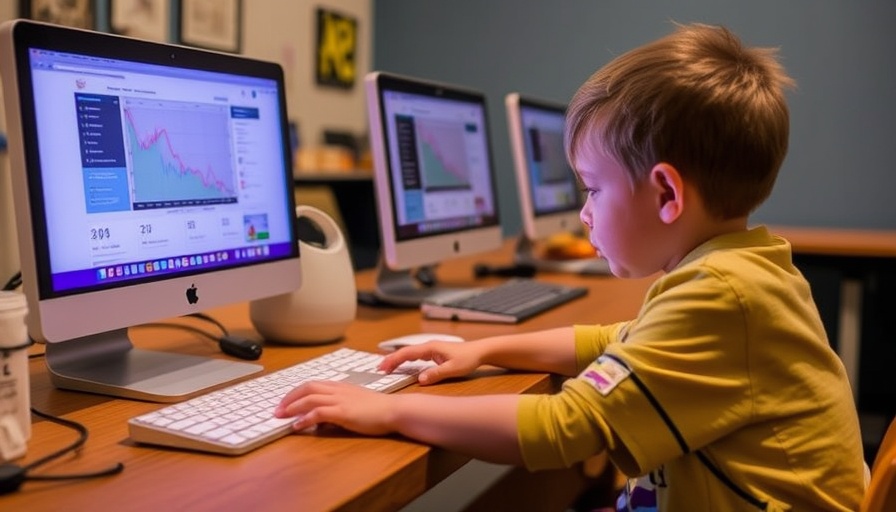
Understanding the Rising Risks Teenagers Face Online
In a rapidly changing digital landscape, the worries of parents around the globe are increasingly focused on their children's online safety. Recent research from McAfee reveals shocking statistics: over one in five children have encountered threats online, with incidents skyrocketing during middle school years, particularly at the vulnerable age of 13. As social media and gaming platforms evolve, so do the cyber risks associated with them, pushing concerned parents to confront the reality of cyberbullying and deepfakes.
Cyberbullying: An Inescapable Reality for Many Teens
Among the findings, 43% of parents reported their children faced cyberbullying or harassment, and the statistics indicate that girls are disproportionately affected. The study showed that 62% of girls ages 13 to 15 experienced online bullying, while 52% of their male counterparts reported similar experiences. Beyond awareness, it's crucial for parents to understand the emotional fallout from these events, with 42% of parents noting that online harassment has led to anxiety or feelings of unsafety for their teens. Such emotional implications underscore the importance of transparent and supportive conversations about online interactions.
Deepfakes: A New Challenge for Young Users
Another alarming trend captured by the research is the rising incidence of deepfake misuse, which has escalated fears among parents. The reality that nearly one in five children has been affected by deepfake technologies calls for urgent discussions within families. This particularly impacts teenage girls, with the number jumping to 38% experiencing such manipulations. Understanding what deepfakes are and how they can be weaponized is crucial for both parents and children as they navigate the digital world.
The Complex Nature of Online Interactions: More Than Just Bullying
Kids today are faced with several online risks beyond typical cyberbullying—scams, inappropriate contacts, and sextortion cases add layers of complexity to their digital experiences. For instance, about 28% of parents cited inappropriate contact as a concern, while a staggering 25% reported incidents of blackmail or sextortion affecting particularly older teenagers. These statistics illustrate that the digital world is as enticing as it is risky, urging parents to tighten their monitoring practices and stay educated on emerging threats.
The Digital Generation Gap: Bridging the Divide
Perhaps one of the most startling findings of the McAfee report is the digital divide between parents and their children. Nearly half of the surveyed parents confessed that their children often know more about technology than they do, and many struggle to keep up with the rapidly evolving risks. This generational gap can leave parents feeling powerless in their efforts to safeguard their children. However, fostering an environment of open dialogue can be beneficial, allowing parents to ask questions and learn alongside their children about online safety.
Concerns About Monitoring Online Activity
Despite 95% of parents acknowledging the importance of discussing online safety, only about one-third actively engage in checking their children's devices on a daily basis. This number drops even lower during the teenage years, where complex issues arise yet monitoring tends to lessen. Without regular check-ins, parents may miss crucial signs of distress or risk in their children’s online interactions.
Empowering Parents and Children: The Path Forward
Conclusively, navigating these challenges requires a proactive approach from parents. Providing children with the tools to identify what is real versus what may be fake online is crucial in today’s digital climate. With only 34% of parents expressing confidence in their child's ability to discern online realities, it is clear that more needs to be done. Engaging in educative discussions that cover topics like deepfakes, emotional responses to cyberbullying, and online ethics can empower children to remain safe while fostering critical thinking skills.
The time has come for parents to step up, educate themselves, and engage with their teens about the risks of the online world. By fostering honest conversations and creating open, trusting environments, they can help their children navigate through these challenges with resilience and awareness.
 Add Row
Add Row  Add
Add 




Write A Comment